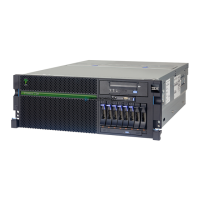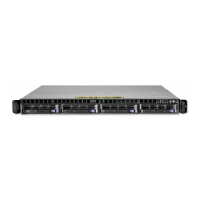indication of this head wear is an increase in soft (recoverable) errors. Using newer tape cartridges may
have enhanced characteristics that can reduce drive head wear and maximize the overall advantages of
the tape device.
Storage and shipping environments
Before using a tape cartridge, let it acclimatize to the operating environment by placing the cartridge in
the operating environment for as long as it has been away from the environment or for 24 hours,
whichever is less. Acclimatization is necessary for any data cartridge exposed to an environmental change
in humidity or to temperature changes of 11°C (20°F) or more. To determine the appropriate operating
environment, see Tape drive environment and use.
Retrieval of archived data can be performed on a tape unit that is clean and fully operational. Try to
make the recovery environment the same as the operating environment. Allow tapes at least 24 hours to
acclimatize to the environment of the tape unit.
The recommended environment for storage and shipment of cartridges is shown in Table 1.
Table 1. Recommended environment for data cartridges
Environmental Factor Storage Shipping
Temperature 5°C - 32°C (41°F - 90°F) -40 - 52°C (-40 - 125°F)
Relative Humidity
(noncondensing)
20% - 60% 5% - 80%
Maximum Wet Bulb 26°C (79°F) 26°C (79°F)
Tape cartridge storage
Tape drives record data using densities similar to hard disk drives. Because most computer systems are
not located in a dust-free, climate-controlled environment, you must exercise special care when dealing
with tape cartridges and tape drives. They must be treated as a valuable asset used to protect your
business data.
Use the following guidelines for storing your tape cartridges:
v Keep temperature and humidity constant at the levels listed in Table 1.
v Always store tape cartridges in their protective cases. The storage case helps prevent damage from dust
and physical misuse. When the tape cartridges are not in use or being stored, keep them in their
storage cases and stand on edge in a designated storage location. Do not stack cartridges on the flat
side or stack other items on top of the tape cartridges. Handle your tape cartridges with care to reduce
archival problems.
v Keep protective cases for tape cartridges closed except when inserting or removing a cartridge.
Contamination can build up and be transferred to the tape cartridge if the protective case is left open.
v Exercise stored tapes at least once every 12 months. Run the tape from Beginning of Data (BOD) to
End of Data (EOD) and back to BOD at normal operating speeds. Exercise tapes stored in a warmer
environment more frequently.
v Sunlight can damage the tape and the cartridge shell. Store tape cartridges out of the direct sunlight.
Attention: Operation outside of the recommended environment can result in possible loss of data or
failure of the drive.
Managing devices 5

